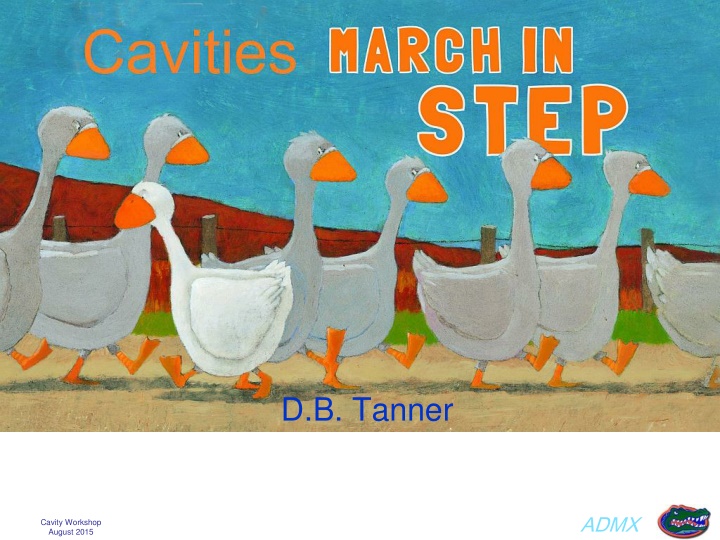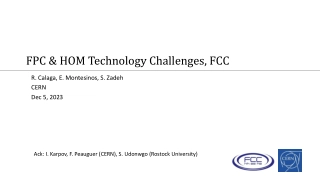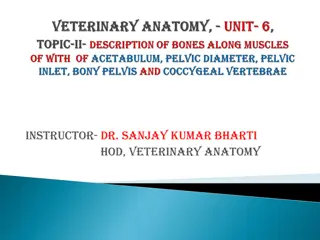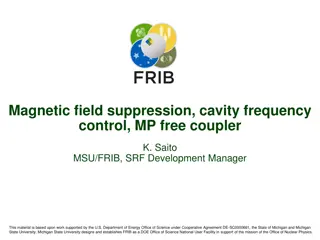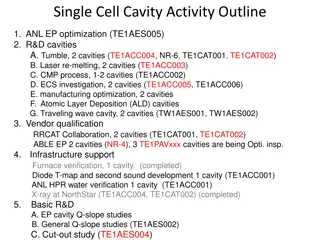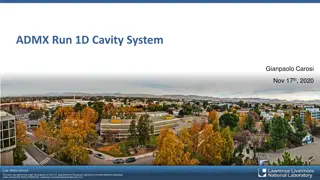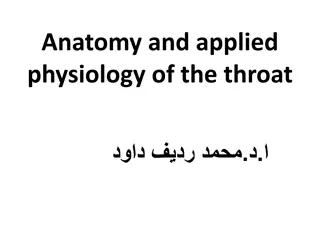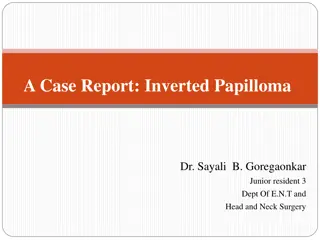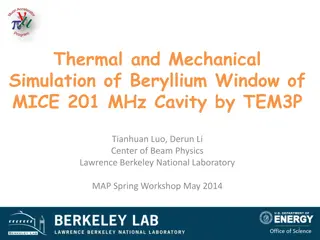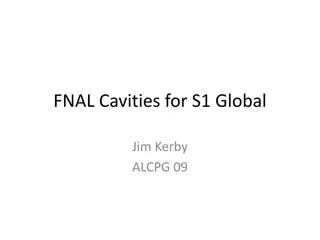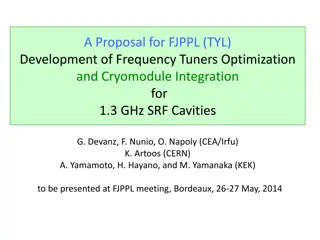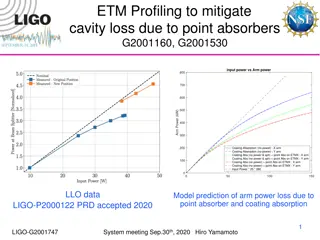ADMX Cavity Workshop Insights
Delve into the fascinating world of ADMX cavity workshops in August 2015, exploring the intricate details of cavity design, signal strength, resonance tuning, and the critical role of identical resonances in the success of the experiment. Learn about the unique methods employed to ensure cavity performance and the quest for optimal power levels within the ADMS magnet. Discover the key factors influencing cavity addition and the importance of precise frequency control for resonance alignment.
Download Presentation

Please find below an Image/Link to download the presentation.
The content on the website is provided AS IS for your information and personal use only. It may not be sold, licensed, or shared on other websites without obtaining consent from the author.If you encounter any issues during the download, it is possible that the publisher has removed the file from their server.
You are allowed to download the files provided on this website for personal or commercial use, subject to the condition that they are used lawfully. All files are the property of their respective owners.
The content on the website is provided AS IS for your information and personal use only. It may not be sold, licensed, or shared on other websites without obtaining consent from the author.
E N D
Presentation Transcript
D.B. Tanner ADMX Cavity Workshop August 2015
Basic cavity is a right circular cylinder Or: For ADMX, r = 21 cm f = 550 MHz L = 100 cm ADMX Cavity Workshop August 2015
Sweet spot is ~ 4-5 GHz f (GHz) 0.5 1 2 5 20 10 10-12 10-13 ga [GeV-1] KVSZ 10-14 ADMX (Higher TM) DFSZ ADMX (complete) 10-15 ADMX (Phase II) a ~ 0.23 10-16 100 1 10 ma ( eV) ADMX Cavity Workshop August 2015
Signal strength Power from the cavity is WhereCis form factor, a is the halo density, ma the axion mass, and QL ~ 70000(GHz/f )2/3(ASE); Qa ~106 are quality factors g ~ 0.97 (KSVZ); g ~ 0.36 (DFSZ) are coupling strengths We use DFSZ; look for ~10-22 Watts power ADMX Cavity Workshop August 2015
Baseline is a right circular cylinder Or: For Sweet Spot, r = 2.6 cm f = 4.5 GHz L = 5.6 cm ADMX Cavity Workshop August 2015
In ADMX magnet, need up to 32 cavities Cover about 1 decade in axion mass ADMX Cavity Workshop August 2015
Cavities must be added in phase ADMX Cavity Workshop August 2015
Requires them to have identical resonances Tune (dead reckoning), measure, adjust Use a servomechanism ADMX Cavity Workshop August 2015
Requires them to have identical resonances Tune (dead reckoning), measure, adjust Use a servomechanism Need a method to bring all resonances to a common frequency Method: Pound, Drever, Hall (PDH) reflection locking Used by LIGO, VIRGO and other gravity experiments ADMX Cavity Workshop August 2015
PDH references Electronic Frequency Stabilization of Microwave Oscillators R.V. Pound, Rev. Sci. Instrum. 17, 490 (1946). Laser phase and frequency stabilization using an optical resonator R.W.P. Drever, J.L. Hall, F.V. Kowalski, J. Hough, G.M. Ford, A.J. Munley, and H. Ward, Appl. Phys. B31, 97-105 (1983). An introduction to Pound Drever Hall laser frequency stabilization Eric D. Black, Am. J. Phys. 69, 79 (2001). Understanding Pound-Drever-Hall locking using voltage controlled radio-frequency oscillators: An undergraduate experiment C.E. Liekhus-Schmaltz and J.D.D. Martin, Am. J. Phys. 80, 232 (2012). ADMX Cavity Workshop August 2015
Pound Drever-Hall (PDH) reflection locking Cavity reflects (promptly) waves that are not on resonance Reflection dip at resonance, along with phase change ADMX Cavity Workshop August 2015
Phase-modulated light ADMX Cavity Workshop August 2015
As cavity tunes, phase of reflected carrier shifts ADMX Cavity Workshop August 2015
Simulated PDH signal ADMX Cavity Workshop August 2015
Each cavity can be driven to resonance at the carrier 5 GHz oscillator N-way splitter 20 MHz oscillator Directional couplers Mixer Amplifiers Cavities Tuning rod actuators ADMX Cavity Workshop August 2015
THE END ADMX Cavity Workshop August 2015
